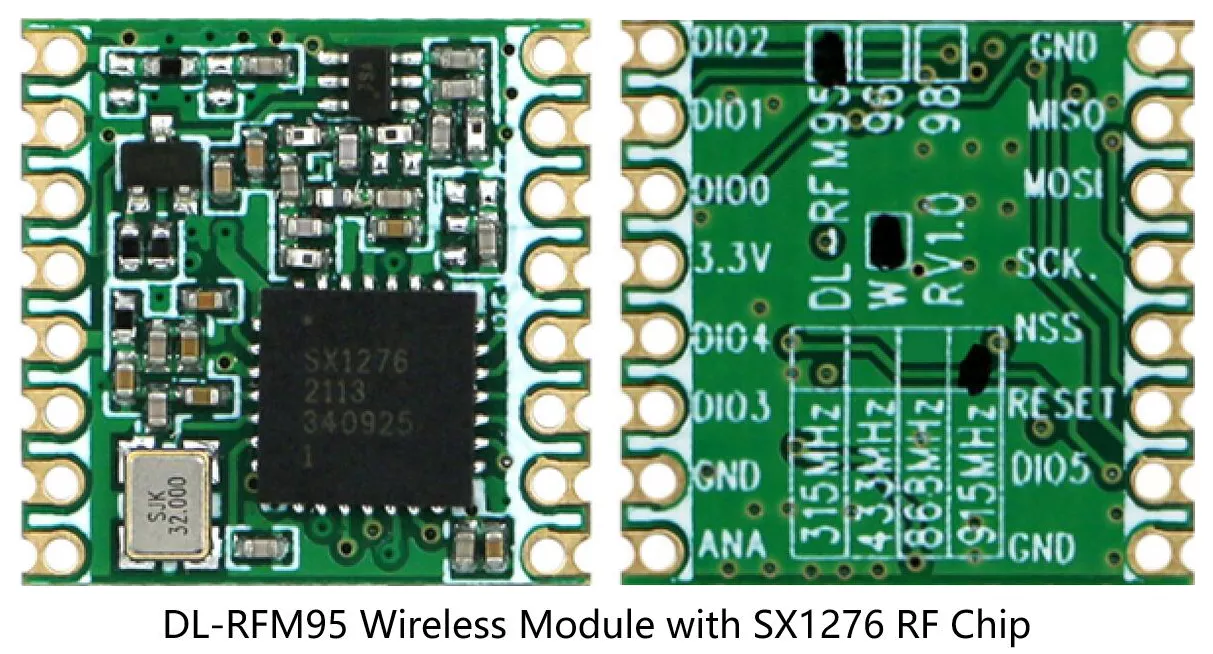Introduction
In 2013, Semtech released the SX1278 and SX1276, which are high-performance, long-range, low-power wireless transceivers designed for the Internet of Things (IoT) utilizing a special LoRa transmitter modulation technique to enhance communication distances.
SX1262: A Newer Product
Introduced by Semtech in 2018, the SX1262 also incorporates the unique LoRa modulation technique. This section compares and analyzes the SX1262 alongside the earlier SX1278 and SX1276 models.
Comparison and Analysis of Chip Packaging and Pins
Chip Packaging
Both the SX1278 and SX1276 share the same packaging, using a 6×6 mm, 28-pin QFN package. This larger chip size, combined with RF peripherals, results in relatively larger RF module sizes. In terms of pin configuration, only two pins differ: pins 21 and 22 are GND on the SX1278, whereas on the SX1276, pin 21 is RFI_HF, and pin 22 is RFO_HF.
The SX1262, however, utilizes a smaller 4×4 mm, 24-pin QFN package, allowing for smaller RF module sizes. The pin configuration for the SX1262 is shown in the accompanying diagram.
Modulation Techniques
The SX1262, SX1278, and SX1276 all support various modulation techniques, including LoRa and traditional (G)FSK. The LoRa modulation technique is a highlight for these three chips.
Oscillator Circuits and Supported Frequency Bands
Oscillator Circuits
All three models can use a TCXO oscillator. If using a TCXO, the XTB pin is not connected. On the SX1262, pin 6 (DIO3) can power the TCXO oscillator, which is configurable via software.
When using an XTAL oscillator, the SX1278/6 requires external matching capacitors, whereas the SX1262 does not need external capacitors as it has built-in internal ones, adjustable through software.
Supported Frequency Bands
The SX1278 supports frequencies from 137-525 MHz with RF output at pin 27 (PA_BOOST) or pin 28 (RFO_LF) and RF input at pin 1 (RFI_LF); the SX1276 supports frequencies from 137-1020 MHz. When operating between 137-525 MHz, the RF output must be either pin 27 (PA_BOOST) or pin 28 (RFO_LF), and the RF input must be pin 1 (RFI_LF). For frequencies between 862-1020 MHz, the RF output must be either pin 27 (PA_BOOST) or pin 22 (RFO_HF), and the RF input must be pin 21 (RFI_HF), indicating that the SX1276 can be seen as an enhanced version of the SX1278.
The SX1262 supports frequencies from 150-960 MHz, with RF output at pin 23 (RFO) and differential RF input at pins 21 (RFI_P) and 22 (RFI_N). Changing frequency bands does not require changing pins, only adjustments in the RF circuit parameters.
Power Supply, Transmission Power, Sensitivity, and Current
Power Supply and Transmission Power
The SX1278/6 has only one power supply method, with a maximum transmission power of 20 dBm, achievable using pin 27 (PA_BOOST) at a current of 120 mA @ 20 dBm. The SX1262 can reach up to 22 dBm with two power supply options: a low dropout regulator (LDO) and an efficient buck DC-DC converter, with a transmission current of 118 mA @ 22 dBm.
Reception Sensitivity and Current
The SX1278/6 has a reception current of about 12 mA, while the SX1262, using the DC-DC method, has a reception current of about 5 mA. All three devices can achieve a sensitivity of -148 dBm.
Spread Spectrum Factor, Airspeed, and Other Parameters
Under LoRa modulation, the SX1278/6 has a spread spectrum factor of 6-12, BW 7.8-500 kHz, and an airspeed of 0.018-37.5 kbps. In contrast, the SX1262 has a spread spectrum factor of 5-12, BW 7.81-500 kHz, and an airspeed of 0.018-62.5 kbps, indicating that the SX1262 can achieve significantly higher airspeeds under LoRa modulation compared to the SX1278/6.



